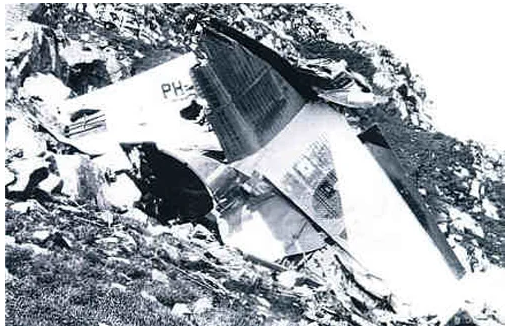(Kashmir Rechords Exclusive)
The tragic crash of a London-bound passenger flight from Ahmedabad on June 12, 2025, just moments after takeoff, has shaken the world’s conscience. The disaster, which claimed numerous lives in the air and on the ground, has sparked global grief—and revived haunting memories of past aviation tragedies.
One such forgotten disaster occurred nearly six decades ago in the serene mountains of Kashmir, where snow and silence still guard the remnants of a doomed flight.
A Mountain Tragedy Buried in Time
High in the Pir Panjal range, in Kulgam district of South Kashmir, lies a rugged, snow-covered peak known as Houen Heng—literally, Dog’s Horn. At an altitude of 4,200 meters, it’s now known not just for its beauty, but for the sorrow it holds.
On February 7, 1966, an Indian Airlines Fokker F-27 aircraft crashed into this very mountain, killing all 37 people on board, including top government officers of Jammu and Kashmir, like Director Education, Ghulam Ahmad Mukhtar and his wife and Dr Hafizullah, a noted Chest Specialist.

The aircraft (registration PH-SAB) was owned by Schreiner Airways of the Netherlands and operated by Indian Airlines under charter. It had taken off from Srinagar, bound for Delhi with scheduled stops at Jammu and Amritsar.
Shortly after takeoff, the plane veered 12 miles off course and crashed headlong into Houen Heng. The wreckage was spread across the mountainside. There were no survivors.
Cause: A Costly Navigational Error
As per the Bureau of Aircraft Accidents Archives, the crash was the result of a navigational error by Captain Duggal, the flight’s commander. Hoping to save time, he attempted a risky shortcut over the mountains—mistaking a deceptive ridge for Banihal Pass.
Flying through dense clouds and without visual confirmation, he sent a radio message stating he was about to cross Banihal. In reality, he was 12 miles off-track.
Moments later, the aircraft hit the mountainside at 12,364 feet above sea level—just 300 feet below the summit—shattering into two major sections and scattering debris across the steep hillside.

The Inquiry and Its Verdict
An official probe held Captain Duggal responsible, noting that “a more cautious pilot would have verified direction and position using the available navigational aids at Srinagar Airport,” such as VOR and ADF systems.
By the time he realized his mistake, it was too late. The “false Banihal” ridge he encountered was several thousand feet higher than the actual pass.

Houen Heng: From Peak to Folklore
Since the accident, Houen Heng has earned a grim place in Kashmir’s modern folklore. Though not the highest peak in Kulgam or Pir Panjal, its steep, treacherous face has become symbolic of the tragedy.
Following the crash, a heartfelt civil society mission was launched to retrieve the remains of the victims. It was led by a local businessman who had lost his son in the disaster—a story of grief turned into communal resolve.
To this day, remnants of the aircraft remain scattered across the snow, drawing occasional trekkers and curious mountaineers. Many routes from Mohu Valley and Gulab Garh lead to the peak, though only seasoned climbers dare ascend it from the front side.
📰 Did this piece move you? Read Kashmir Rechords for more forgotten stories, history, and insights from Kashmir and beyond.
💬 Have a story or memory related to aviation in Kashmir? Share it with us in the comments or email us at [kashmirrechords@gmail.com]

